Prey 2
Back in the hunt.
Released in 2006, Human Head's Prey may not have set all hearts equally aflutter, but it was a first-person shooter with a few remarkable features.
It had portals before Portal. You could save your own life by going on a brief spiritual journey after getting shot in the face. And it had a Native American protagonist called Tommy who harnessed latent supernatural powers to punch body-harvesting aliens in the maw.
Perhaps strangely, then, Prey 2 dumps all that. You play a US Marshall called Killian Samuels and you're a bounty hunter on the planet Exodus, fighting your way through an openworld game inspired by Blade Runner and Mirror's Edge.
If this does not strike you as the most obvious course of action for a Prey sequel you are probably not alone, but developer Human Head does not agree. Prey, says studio founder Chris Rhinehart, was about taking players to a new place and employing new mechanics, using alien abduction as the entry point. These themes also form the basis of Prey 2.
One big change though is that while the first game's title could well have been a reference to Tommy for large sections of the action, the sequel aims to redress the balance. On Exodus the aliens are the prey, and you are the predator.
The game begins by tying Killian into the Prey narrative. You were on a plane that was harvested out of midair in full view of Tommy in the first game. You wake up inside an alien ship surrounded by plane wreckage, staring up at the Earth and stars through gaps in the hull.
You still have your sidearm - you're a US Marshall, after all - so unlike your fellow victims you can take the fight to the slavers who have ensnared you. This is done by diving into cover, popping out from behind objects in iron sights, blind-firing, sliding to other crates and doing all the other standard FPS things. Swap the Cthulhu tentacles and alien electronics for brown corridors and military fatigues and you could be playing anything.
But then you're smacked unconscious by a pair of aliens. You wake up some time later on Exodus, a world where one hemisphere always faces the sun. The section of the game we see is the Central City Bowery, just on the borderline between the light and dark faces of the planet, and we're picking up the action 31 days after Killian's revival.
The architecture is partly the retrofitted future of Ridley Scott, but it's equally reminiscent of Star Wars Episode II's Coruscant. Ships float through the air bearing neon ad hoardings, alien merchants flog fast food on platforms hundreds of metres above indiscernible gloom and everything is simultaneously bright and dark. Human Head calls it "alien noir".
Killian is a master of these surroundings. He prowls the streets using one of a range of gadgets to track down potential bounties, using a mixture of guns, gadgets and parkour to deliver whatever fate he's been paid to regard as justice.
Prey may have been a classic run-and-fire FPS in some respects - one of those games where your weapon is always on-screen and your first instinct is to pull the trigger - but Prey 2 aspires to be an action-adventure. It even boasts light RPG elements for handling upgrades and gadgets. The act of raising a weapon now has to be initiated and it has ramifications in the world, where aliens cower, flee or perhaps raise their own gun in reply.
When he does get in a fight Killian still has all the cover mechanics you saw earlier, now augmented by the ability to vault and climb across the environment. He uses the verticality as much to his advantage as the networks of walkways and plazas that form the concourses and communal areas of this crime-ridden neighbourhood.


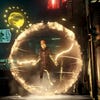
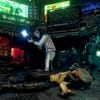



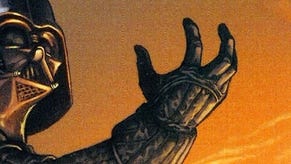




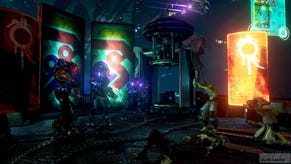
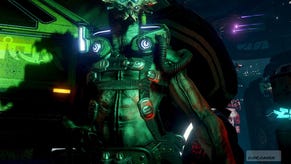
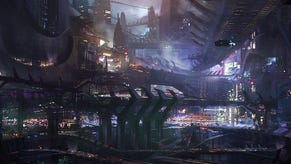

.png?width=291&height=164&fit=crop&quality=80&format=jpg&auto=webp)




.jpg?width=291&height=164&fit=crop&quality=80&format=jpg&auto=webp)
